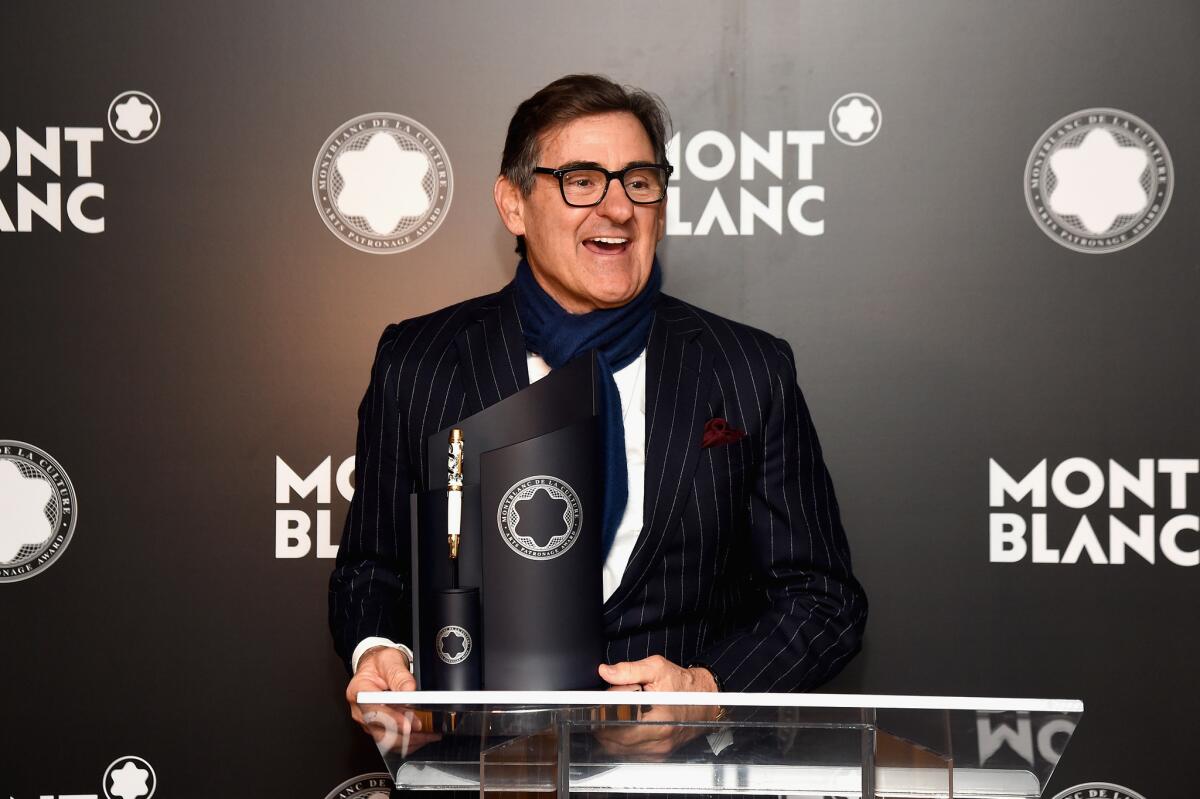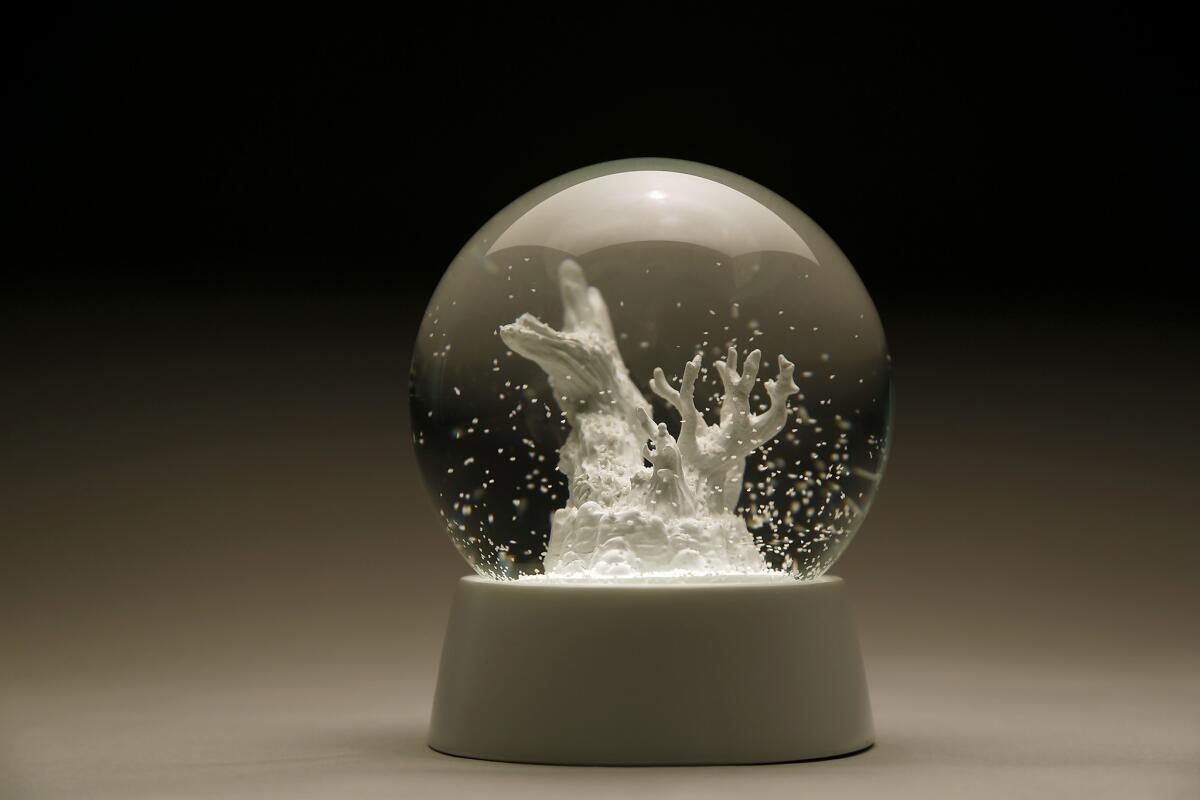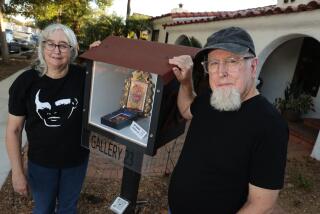Roundup: Senators probe art museums, Arts District fancification, Microsoft founder’s on-off art space

The Senate Finance Committee is looking at the tax-exempt status of a number of private art museums, including that of mogul Peter M. Brant, above, photographed at the Montblanc De La Culture Arts Patronage Award in New York City this month.
- Share via
A bunch of senators are suddenly interested in the nonprofit tax status of private art foundations. The future of billionaire Paul Allen’s big new Seattle art space is uncertain. Black artists are finally getting serious consideration by U.S. museums. Also: whiny American curators, the Arts District’s hyper-development, and the sometimes terrifying intersection of life and technology.
— The nonprofit tax status of some private arts institutions, including the new Broad museum in L.A. and the Brant Foundation in Connecticut, is being questioned by the Senate Finance Committee. This is not entirely uncalled for in the case of some minuscule art foundations that are largely inaccessible to the public. But it’s worth noting that there’s probably way more dough in televangelism.
— Microsoft co-founder Paul Allen recently launched a Seattle arts center called Pivot. Now, with an inaugural exhibition about to open, it seems like he’s pivoting away (sorry, couldn’t resist) from the idea of a permanent space. If that’s the case, it will be a real bummer for the staff who got on board thinking it was going to be a real-deal space.
— “You tell your American curators to stop being such whiners.” A profile of Sheena Wagstaff, who is overseeing the Metropolitan Museum of Art’s new contemporary arts effort, which will take over the Whitney’s old Marcel Breuer building, has a blazing kicker courtesy of the museum’s director, Thomas Campbell. Lots to read between the lines on this story.
— On the eve of Art Basel Miami Beach, the Miami Herald offers an overview of the city’s museums, one of which is headed up by LACMA alum Franklin Sirmans.
— Sort of related: LACMA director Michael Govan says “the era of art fairs is a little bit over.” I sure hope so.
— The rising profile of black artists in museums: Interesting piece by Randy Kennedy at the New York Times on how institutions are retelling the story of art by beginning to include and acquire artists who had been previously overlooked.
— Amsterdam’s Rijksmuseum says put away the camera and sketch the art instead.
— San Francisco Chronicle architecture critic John King looks at what appears to be the inevitability of George Lucas’s Chicago museum — despite the fact the building is slated to be developed in a no-development zone. Go figure, Chicago urban planning. (Subscription required.)
— Starting Tuesday, the Billboard Creative will bring art to almost three dozen billboards located primarily in the Hollywood area.

Adele Mailer with her then-husband, novelist Norman Mailer, in a 1960 image. Adele Mailer recently passed away at the age of 90.
— The day in fascinating obituaries: Adele Mailer, who was once married to (and stabbed by) novelist Norman Mailer.
— William Poundstone has listened to the Broad museum’s audio guide and has dug up the best quote, courtesy of Barbara Kruger.
— A pair of gripping pieces on the intersections of technology and life: Adrian Chen looks at how Twitter helped convert a follower of the Westboro Baptist Church, and Jason Fagone reports on how a trolling teenager in Canada used the Internet to send SWAT teams to people’s homes in the U.S. Terrifying.
— Good versus important architecture: Rory Stott on what to preserve.
— And some smart designs: Ikea’s flat-pack refugee shelters, which come with solar panels, last for three years and are way better than tarps.
— Plus, how design firm Pentagram gave Snoop Dogg’s marijuana line a high-end makeover. Psychedelically classy.
— There is lots of fancy-pants development cooking in the Arts District. The vast majority of it not art-related.
— A Modernist bowling alley in Whittier will be reborn as retail. Nice to see vintage architecture being repurposed rather than torn down.
— From the annals of bad urban planning: the mostly unregulated oil fields of South Los Angeles.

A snow globe from L.A. artist Jeff Weiss’ Prometheus Project honors an ancient bristlecone cut down in Nevada’s Great Basin. The artist discusses the project on The Conversation podcast with Michael Shaw.
— In an entertaining episode of the podcast The Conversation, Jeff Weiss, the artist whose Prometheus project I wrote about earlier this year, talks about reading old French guys, his regular email blast, Weisslink, and the power of ancient trees.
— And last but not least: The Atlantic looks at the inherent creepiness of the opening credits for “The Man in the High Castle” and its spooky rendition of “Edelweiss.” Plus: how the TV show compares to the Philip K. Dick novel on which it is based.
Find me on the Twitters @cmonstah.
More to Read
The biggest entertainment stories
Get our big stories about Hollywood, film, television, music, arts, culture and more right in your inbox as soon as they publish.
You may occasionally receive promotional content from the Los Angeles Times.











